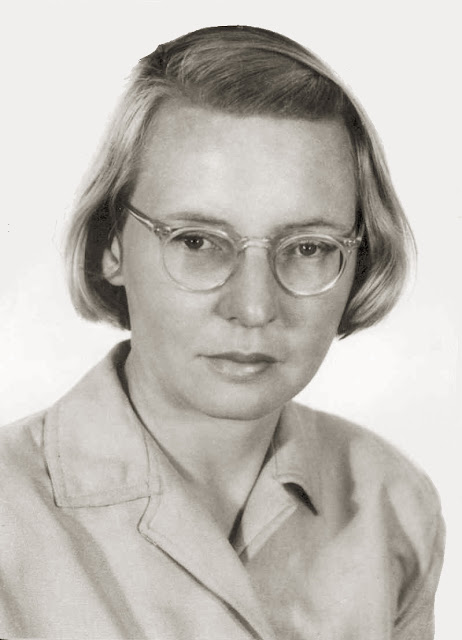Ruby Payne-Scott
 |
| Australian Radio Astronomer Ruby Payne-Scott (1912-1981) Credit: Peter Hall |
Ruby Payne-Scott was born in May 1912 in New South Wales, Australia. She earned her bachelor's degree in 1933 from the University of Sydney, where she studied physics, chemistry, mathematics, and botany. Three years later, she earned her master's degree in physics, followed by a Diploma of Education in 1938. As there were few opportunities for physicists or women at the time, Ruby became a schoolteacher and then took a job at Amalgamated Wireless (Australasia) where she cataloged and calibrated equipment for radio technicians.
In 1941, Ruby joined the Radiophysics Laboratory of the Australian government's Commonwealth Scientific and Industrial Research Organization. During World War II, Ruby worked on top-secret radar technology, detecting aircraft using Plan Position Indicator displays. In 1944, Ruby married William Hall; this, however, posed a problem for Ruby, as women in public service at the time were expected to resign after marriage. She was such an integral part of her colleagues' work, however, that they helped keep her marriage a secret.
 |
| Ruby Payne-Scott along with some colleagues at a conference in 1952. Credit: ATNF Historical Photographic Archive |
Working with Joe Pawsey and Lindsay McCready in 1945, Ruby was part of the team that discovered a connection between sunspots (those dark spots one sees on the Sun) and increased radio emissions from the Sun. In February 1946, the trio performed the first radio interferometry for astronomical observations. Their observations confirmed that sunspots emit intense radio bursts. Ruby spent the next few years conducting further research on radio bursts emitted by the Sun.
Another radio astronomer who has been discussed on this blog is Elizabeth Alexander, who researched radio interference from the Sun, among other topics.


Comments
Post a Comment